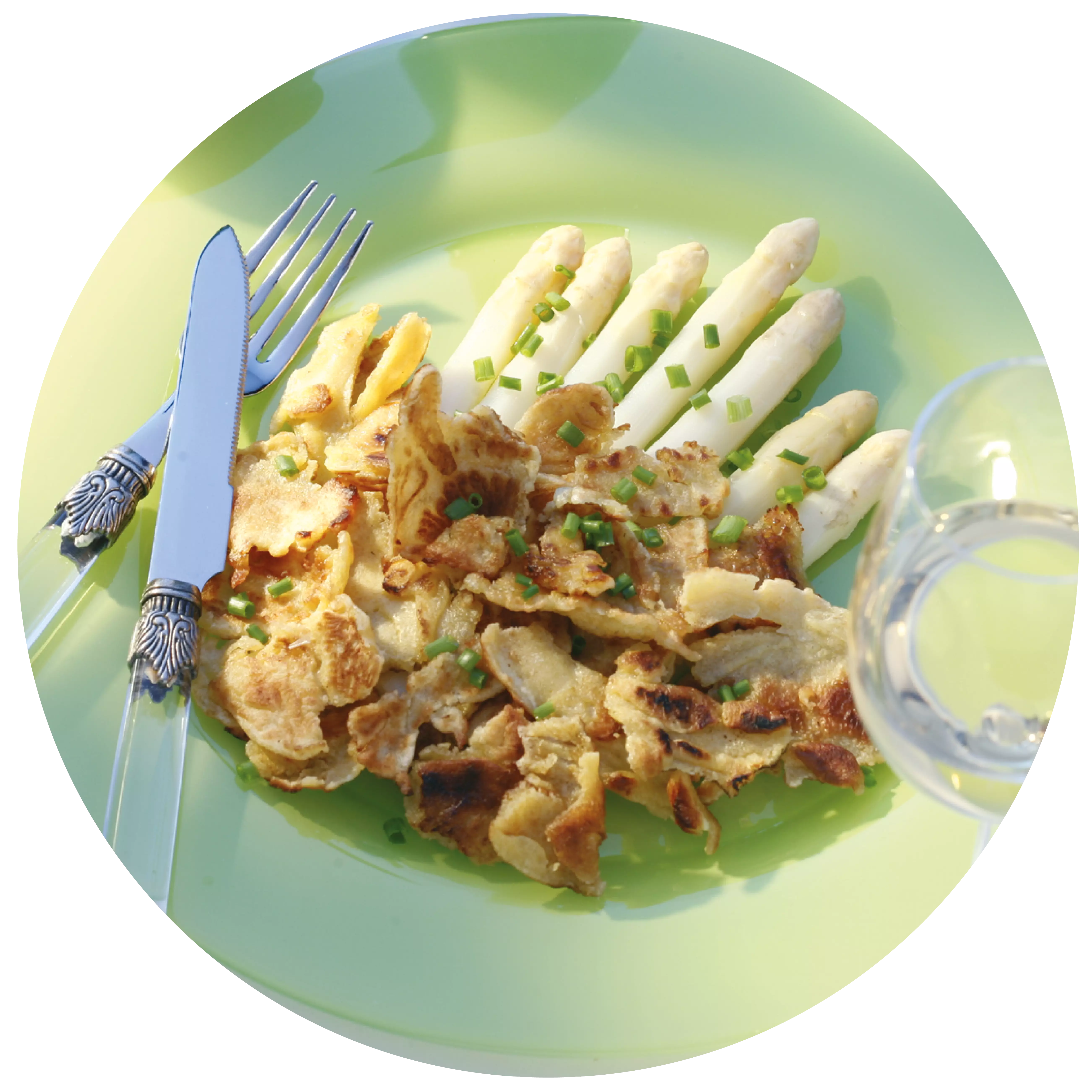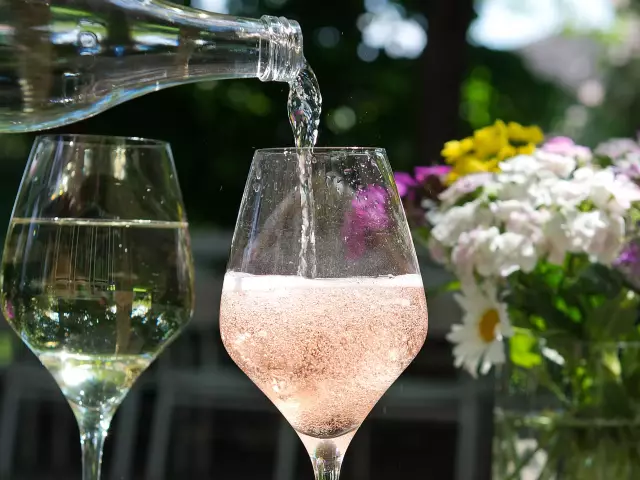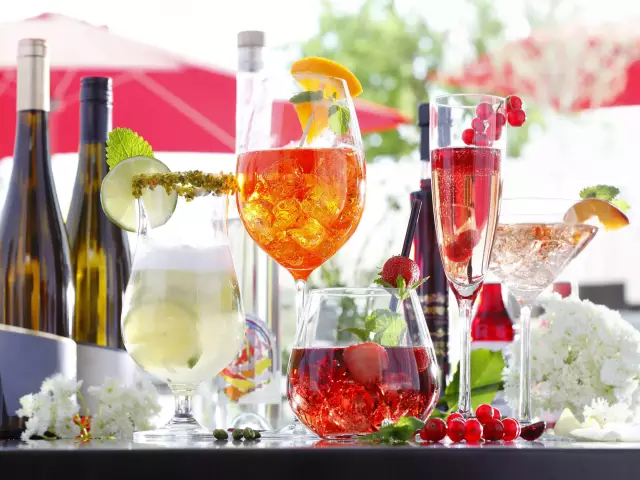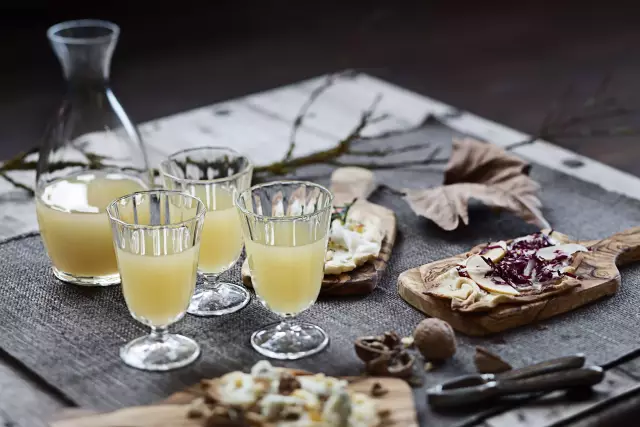Sparkling wine
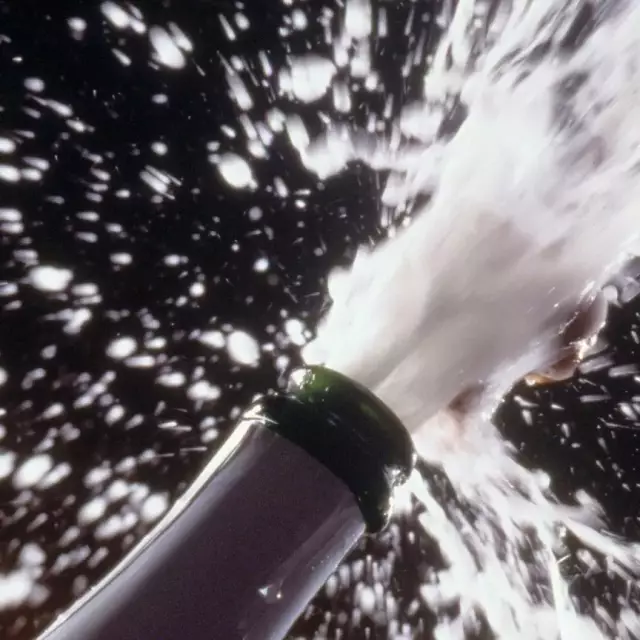
Be it New Year’s Eve, a party or brunch, a Formula One or a horse race – whenever people are bubbling over with joy, it’s hard to imagine them without a glass of bubbly, the sparkling crown jewel of winemaking.
Facts
-
8 - 10°
are ideal drinking temperatures
-
3,5
bar minimum
-
9 Monate
Fermentation in the bottle
-
0-3g
residual sugar content correspond to "brut nature".
German gourmets are the world champions of Sekt consumption. And that’s why many wine estates have established Winzersekt as a fixed component on their list of offers.
Extra Effort brings Extra Flavor
Classic fermentation in the bottle: At the beginning of the production of Sekt, sugar and a special kind of yeast, able to withstand great pressure, are added to the base wine. This initiates the second fermentation, producing the CO2 that will later make the Sekt sparkle so pleasantly in the glass. The pressure exerted by the carbonic acid needs to amount to at least 3.5 bar – up to 6 bar can be achieved. In the original method of Sekt manufacturing, the so-called Méthode champenoise, and in classic bottle fermentation, the second fermentation takes place in the individual bottle.
In a dark and cool cellar, Winzersekt lies and matures on its yeast for a minimum of 9 months, sometimes for years. After this, the bottles are placed upside down into so-called riddling racks. For a period of four weeks, they get turned daily and set ever more steeply upright at the same time. At the end of this laborious process, all the yeast has collected in the bottle’s neck. The bottle necks are then immersed in a brine (a freezing cold solution) to make the yeast freeze. If the bottles are opened now, the pressure from the carbonic acid ejects the yeast clot. The technical term for this process is “disgorging”.
Since the term “Méthode champenoise” has been exclusively reserved to the products of the French Champagne region for many years, Sekt manufactured by this method in Germany uses the term traditional or classic bottle fermentation.
Designations of styles
The designations for the styles of Sekt as defined by German Wine Law are different from those of wine, because the natural carbonic acid content of Sekt reduces the perception of sweetness. Accordingly, the permissible residual sugar levels of a dry Sekt are markedly higher than those of a dry wine.
- brut nature: 0-3 g/l
- extra brut: 0-6 g/l
- brut: 0-12 g/l
- extra dry: 12-17 g/l
- dry: 17-32 g/l
- semi-dry: 32-50 g/l
- mild: over 50 g/l
Not everything that foams is sparkling wine:
Schaumwein is the generic term for moussing, i.e. foaming wines with perlage, with a minimum pressure of 3 bar.
Sparkling wine is sparkling wine whose carbonic acid is produced during fermentation and generates at least 3.5 bar of internal pressure.
Perlwein has less pressure, the carbonic acid may also be added. Good sparkling wines are fresh, light, summery-fruity and at the same time relatively inexpensive, as they are not subject to sparkling wine tax.
Secco is the modern term for trendy sparkling wines.
Crémant can be called German sparkling wines that meet certain specifications for grape varieties, harvest and fermentation.
Which wine-growing region was the first to introduce sparkling wines to the market?
Rheinhessen launched the first vintner sparkling wines in Germany more than 25 years ago.
Varietals

More recipe ideas
with strong red wine Wild boar ragout
with strong red wine
- 800 Gramm Fleisch vom Wildschwein (Keule o. Schulter)
- 80 Gramm Bauchspeck
- 100 Gramm Zwiebeln
- 60 Gramm Karotten
- 60 Gramm Staudensellerie
- 1 TL Tomatenmark
- 200 ml kräftigen Rotwein
- 100 ml Portwein
- 1 Liter braune Wildbrühe
- 1 TL Preiselbeeren
- 1 EL geschlagene Sahne o. Sauerrahm
- 20 Gramm Mehl
- 1 Stück Lorbeerblatt
- je 1 Zweig Rosmarin und Thymian
- 4 zerdrückte Wacholderbeeren
- 1/2 TL Senf
- nach Belieben Salz & Pfeffer
Clean and wash the vegetables and cut into evenly sized cubes.
Remove the fat, skin and tendons from the wild boar meat and cut into 3 cm cubes. Season with salt and pepper and sprinkle with flour. Heat the oil in a frying pan and brown the meat on all sides. Add the vegetables and diced bacon and fry. Add the tomato purée and stir fry. Deglaze with the red wine and port, reduce and pour in the brown game stock. Add the spices to the meat in a small spice bag and leave the ragout to simmer in the oven at 160°C for approx. 1½ hours.
Then remove the pieces of meat, remove the spices, strain the sauce, add the cranberries and mustard and leave to reduce for about 15 minutes. If necessary, thicken with a little cornflour. Serve with the whipped cream.
- Spätburgunder / Pinot Noir (trocken)
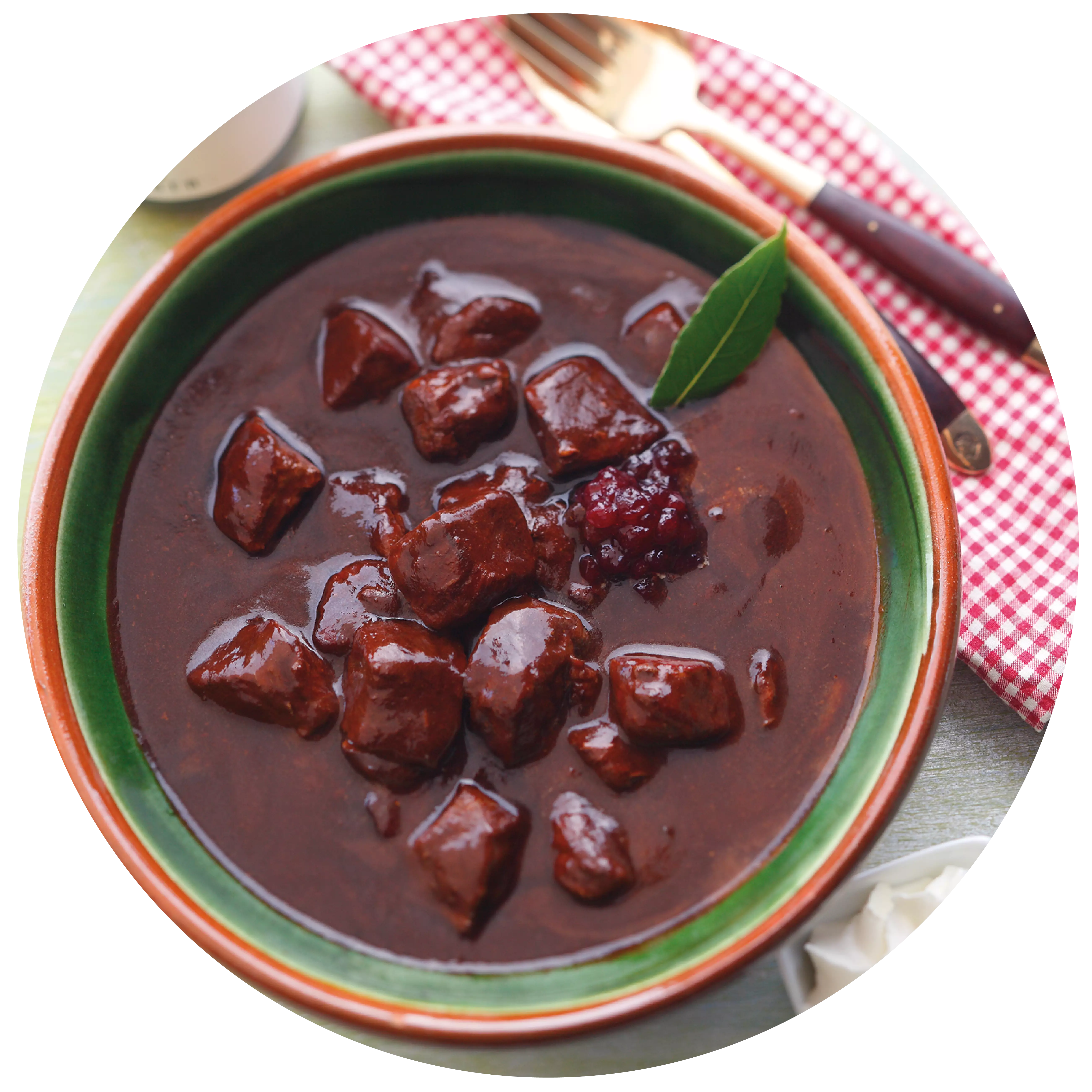
with pears, beans, parsley root and black walnuts Venison medallions
with pears, beans, parsley root and black walnuts
- 12 Stück Rehmedaillions (a 80g)
- 30 Gramm gebratene Speckstreifen
- 200 ml Bechamelsauce
- 3 EL Sonnenblumenöl
- 8 kleine Petersilienwurzeln mit Grün (alternativ Knollensellerie)
- 6 - 8 breite Schnippelbohnen
- 1 große Birne
- 4 - 6 schwarze Walnüsse
- 100 ml Wildfond
- 2 EL Butter
- 2 Stängel glatte Petersilie
- nach Geschmack Salz
Preheat the oven to 180 °C top and bottom heat. Clean, peel and trim the parsley roots. Clean the beans and cut into diagonal pieces. Blanch the parsley roots and beans separately in boiling salted water and rinse immediately in iced water.
Cut the walnuts into eighths and warm in the game stock. Wash the unpeeled pear, cut into eighths, remove the core and cut into thin slices. Fry the venison medallions on both sides in oil, then finish cooking in the oven for approx. 3 - 5 minutes.
In the meantime, toss the beans and parsley roots in melted butter and season with salt. Arrange the vegetables with the black walnuts and pear slices on large plates. Place the medallions on top, garnish with game stock, Béchamel sauce and bacon strips.
Tip: You can make your own black walnuts. To do this, prick the walnuts all over with a fork or skewer and place in water for 10 days. Change the water every day so that the tannic acid can drain off. Boil the nuts 3 times in salted water until they are deep black. Simmer with bay leaves and peppercorns for approx. 20 minutes until soft. Layer in preserving jars and cover with syrup. The nuts can be kept for approx. 1 year.
- Spätburgunder / Pinot Noir (trocken)
- Pinot Gris (trocken)
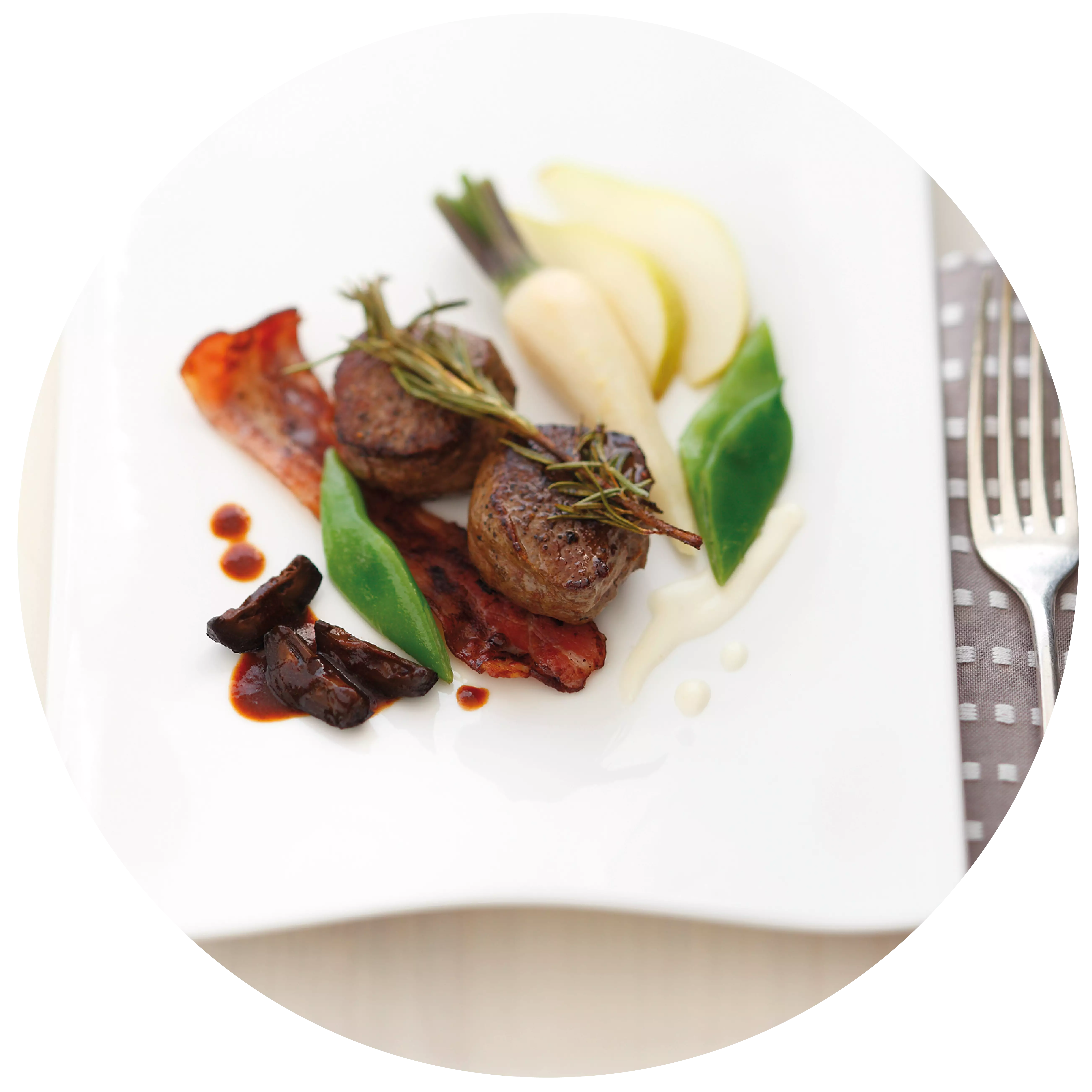
with wild duck breast, porcini mushrooms and glazed chestnuts Herb salad
with wild duck breast, porcini mushrooms and glazed chestnuts
- 150 Gramm Wildkräuter
- 4 EL Olivenöl
- 2 EL Balsamessig
- 8 Stück Wildentenbrüste (a 100g)
- 2 EL Sonnenblumenöl
- 4 EL Honig
- 1 EL Thymian
- 200 Gramm Steinpilze
- 20 gekochte Maronen
- 100 ml Apfelsaft
- 2 El Zucker
- nach Belieben Salz & Pfeffer
Clean, wash and pat dry the wild herbs. Marinate with olive oil and balsamic vinegar and season with salt and pepper.
Preheat the oven to 220°C top and bottom heat. Season the wild duck breasts with salt and pepper, sear on the meat side in a pan with sunflower oil and cook in the preheated oven for about 8 minutes on the skin side. Remove the duck breast, brush the skin side with honey and thyme and roast for another 2 minutes on a high heat until crispy.
Clean the porcini mushrooms and cut into slices. Fry in a pan in oil on both sides, remove and keep warm. Caramelise the sugar in the pan, deglaze with the apple juice and simmer until the caramel has dissolved. Add the chestnuts and add a little more apple juice if necessary.
- Pinot Blanc (trocken)
- Gutedel (trocken)
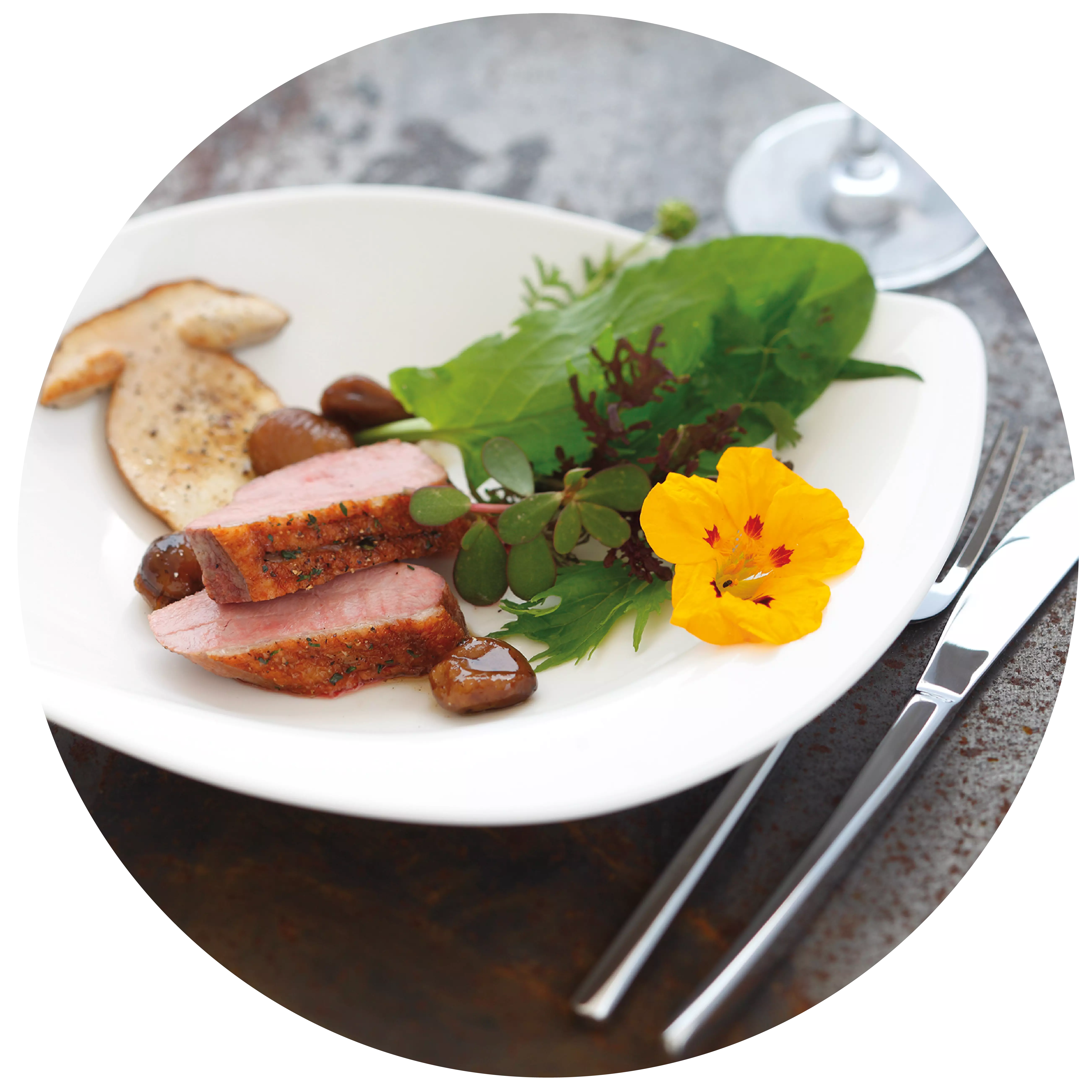
White asparagus with pancake strips Asparagus with "Kratzete"
White asparagus with pancake strips and champagne butter sauce.
- 1kg Weißer Spargel
- 200g Mehl
- 4 Eier
- 150ml Milch
- 1TL Butterschmalz zum Braten
- 2EL Butter
- 1 Zitrone
- 1 Prise Zucker
- 1-3 Schnittlauchröllchen zum Garnieren
- 1 Für die Soße:
- 150g Butter
- 50ml Sahne
- 50ml Sekt
- etwas Salz und Pfeffer
Mix the flour with the eggs, milk and a pinch of salt to make a smooth pancake batter. Leave to soak for 30 minutes.
In the meantime, peel the asparagus and cook in salted water with 2 tbsp butter and a pinch of sugar until al dente. Drain well and keep warm.
<p
<p>Pour the pancake batter in batches into hot clarified butter
.
pour into hot clarified butter. When the underside is browned, use a fork to scrape into pieces. Finish frying until the pieces are golden yellow.
For the champagne-butter sauce, bring the cream to the boil, reduce slightly and stir in the cold pieces of butter (walnut-sized). Add the sparkling wine and season to taste with salt and pepper.
<p
<p>Arrange the asparagus on pre-warmed plates. Add the kratzete, drizzle with the sauce and garnish with chives.
<p
<p>Wine recommendation:
A mild and dry Gutedel or a delicate Kabinett wine from Riesling or Pinot Blanc.
- Gutedel (trocken)
- Riesling (brut)
- Pinot Gris (brut nature)
